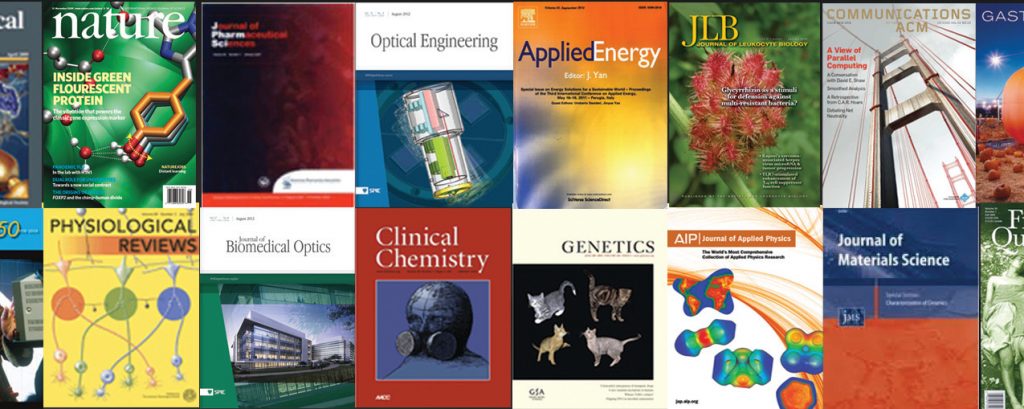References
(Find the links at the Wakelet collection. If you can’t download from there, google scholar the reference and check for free-download links. Another alternative is Research Gate. If none of this works and you really need the article, write me)
Ali, Jaowad, and Abdul Rahman. “A comparative study of grit between male and female fencers of Manipur.” The Shield-Research Journal of Physical Education & Sports Science. 7 (2012).
Christensen, Rhonda, and Gerald Knezek. “Comparative measures of grit, tenacity and perseverance.” International Journal of Learning, Teaching and Educational Research 8, no. 1 (2014).
Coutinho, Marilia. “Ninety years of Chagas disease: a success story at the periphery.” Social Studies of Science 29, no. 4 (1999): 519-549.
Credé, Marcus, Michael C. Tynan, and Peter D. Harms. “Much ado about grit: A meta-analytic synthesis of the grit literature.” Journal of Personality and Social Psychology 113, no. 3 (2017): 492.
Duckworth, Angela L., and Martin EP Seligman. “Self-discipline outdoes IQ in predicting academic performance of adolescents.” Psychological science 16, no. 12 (2005): 939-944.
Duckworth, Angela L., Christopher Peterson, Michael D. Matthews, and Dennis R. Kelly. “Grit: perseverance and passion for long-term goals.” Journal of personality and social psychology 92, no. 6 (2007): 1087.
Duckworth, Angela Lee, and Patrick D. Quinn. “Development and validation of the Short Grit Scale (GRIT–S).” Journal of personality assessment 91, no. 2 (2009): 166-174.
Duckworth, Angela, and James J. Gross. “Self-control and grit: Related but separable determinants of success.” Current Directions in Psychological Science 23, no. 5 (2014): 319-325.
Eskreis-Winkler, Lauren, Angela Lee Duckworth, Elizabeth P. Shulman, and Scott Beal. “The grit effect: Predicting retention in the military, the workplace, school and marriage.” Frontiers in psychology 5 (2014): 36.
Fischer, Ernst Peter, and Carol Lipson. Thinking about science: Max Delbrück and the origins of molecular biology. WW Norton & Company, 1988.
Gilchrist, Jenna D., Angela J. Fong, Jordan D. Herbison, and Catherine M. Sabiston. “Feelings of pride are associated with grit in student-athletes and recreational runners.” Psychology of Sport and Exercise 36 (2018): 1-7.
Goldberg, Lewis R. “The structure of phenotypic personality traits.” American psychologist 48, no. 1 (1993): 26.
Gow, Alan J., Martha C. Whiteman, Alison Pattie, and Ian J. Deary. “Goldberg’s ‘IPIP’Big-Five factor markers: Internal consistency and concurrent validation in Scotland.” Personality and Individual Differences 39, no. 2 (2005): 317-329.
Hammond, Drayton A. “Grit: an important characteristic in learners.” Currents in Pharmacy Teaching and Learning 9, no. 1 (2017): 1-3.
Harper, Kelly L., Paul J. Silvia, Kari M. Eddington, Sarah H. Sperry, and Thomas R. Kwapil. “Conscientiousness and effort-related cardiac activity in response to piece-rate cash incentives.” Motivation and Emotion 42, no. 3 (2018): 377-385.
Komarraju, Meera, Steven J. Karau, Ronald R. Schmeck, and Alen Avdic. “The Big Five personality traits, learning styles, and academic achievement.” Personality and individual differences 51, no. 4 (2011): 472-477.
Larkin, Paul, Donna O’Connor, and A. Mark Williams. “Does grit influence sport-specific engagement and perceptual-cognitive expertise in elite youth soccer?.” Journal of Applied Sport Psychology 28, no. 2 (2016): 129-138.
Mills, Michele. “Reconsidering grit as a two-edged sword for at-risk students.” Global Engagement and Transformation 1, no. 2 (2017).
Nilakantan, A., K. Johnson, and S. Mackey. “Characterizing “grit” or perseverance for long-term goals in patients with chronic low back pain.” The Journal of Pain 14, no. 4 (2013): S20.
Paunonen, Sampo V., and Michael C. Ashton. “Big five factors and facets and the prediction of behavior.” Journal of personality and social psychology 81, no. 3 (2001): 524.
Rimfeld, Kaili, Yulia Kovas, Philip S. Dale, and Robert Plomin. “True grit and genetics: Predicting academic achievement from personality.” Journal of personality and social psychology111, no. 5 (2016): 780.
Ris, Ethan W. “Grit: A short history of a useful concept.” Journal of Educational Controversy 10, no. 1 (2015): 3.
Roland, Robert R., and Paul T. Bartone. “Resilience Research and Training in the US and Canadian Armed Forces.” (2015).
Silvia, Paul J., Kari M. Eddington, Roger E. Beaty, Emily C. Nusbaum, and Thomas R. Kwapil. “Gritty people try harder: Grit and effort-related cardiac autonomic activity during an active coping challenge.” International Journal of Psychophysiology 88, no. 2 (2013): 200-205.
Silvia, Paul J., Zuzana Mironovová, Ashley N. McHone, Sarah H. Sperry, Kelly L. Harper, Thomas R. Kwapil, and Kari M. Eddington. “Do depressive symptoms “blunt” effort? An analysis of cardiac engagement and withdrawal for an increasingly difficult task.” Biological psychology 118 (2016): 52-60.
Stoeber, Joachim, Kathleen Otto, and Claudia Dalbert. “Perfectionism and the Big Five: Conscientiousness predicts longitudinal increases in self-oriented perfectionism.” Personality and Individual Differences 47, no. 4 (2009): 363-368.
Von Culin, Katherine R., Eli Tsukayama, and Angela L. Duckworth. “Unpacking grit: Motivational correlates of perseverance and passion for long-term goals.” The Journal of Positive Psychology 9, no. 4 (2014): 306-312.
Wang, Song, Ming Zhou, Taolin Chen, Xun Yang, Guangxiang Chen, Meiyun Wang, and Qiyong Gong. “Grit and the brain: spontaneous activity of the dorsomedial prefrontal cortex mediates the relationship between the trait grit and academic performance.” Social cognitive and affective neuroscience 12, no. 3 (2017): 452-460.
Wolf, David A. Patterson Silver, Braden K. Linn, and Catherine N. Dulmus. “Are Grittier Front-Line Therapists More Likely to Implement Evidence-Based Interventions?.” Community mental health journal (2016): 1-8.

